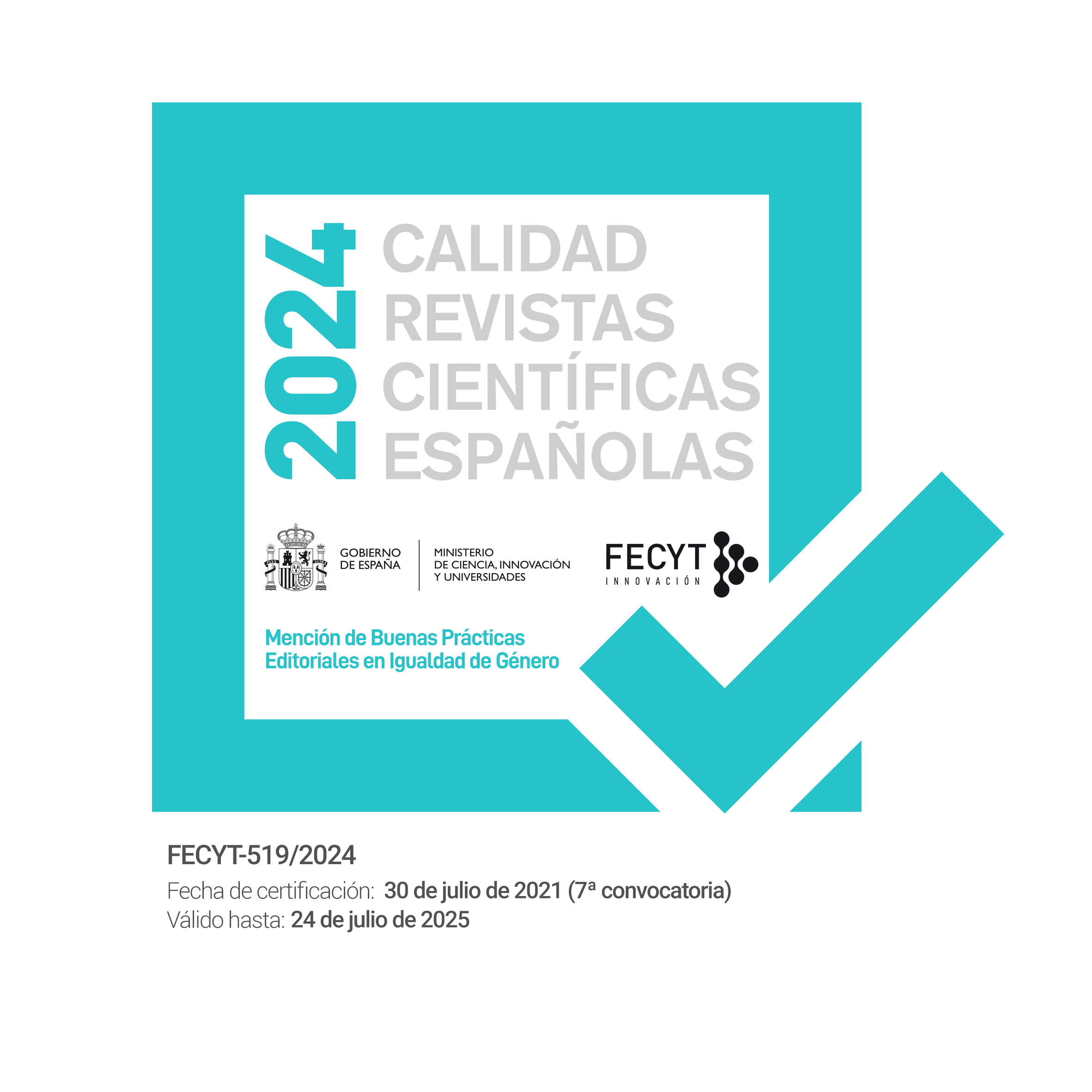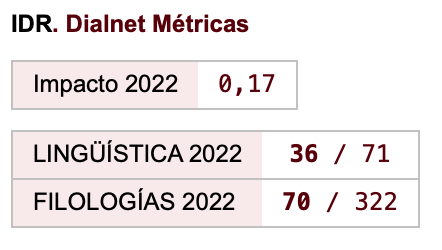Audio description and plurilingual competence: new allies in language learning?
Keywords:
audiovisual translation, audio description, plurilingual and pluricultural competence, PPC, language learning, PluriTAVAbstract
The CEFR (Council of Europe, 2001) and its companion volumes (Council of Europe, 2018, 2020) highlight the development of plurilingual and pluricultural competence (PPC) as one of the main objectives of language teaching and learning. Within this context, the plurilingual approach in education has placed translation in a prominent situation, with authors such as Cummins (2007) observing how it promotes not only the acquisition of foreign languages (FL) and the consolidation of L1s, but also biliteracy development and identity affirmation. Within translation, audiovisual translation (AVT) has proven to be particularly effective in language learning (cf. Lertola, 2019). The polysemiotic nature of audiovisual texts incorporates elements that require the activation of specific forms of mediation that cannot always be found in general translation. This article sets out to reflect on the influence that linguistic and semiotic transfer in AVT can exert on PPC (Author, 2021), drawing on the results of a quasi-experimental research undertaken within the PluriTAV project (cf. Martínez-Sierra, 2021). This specific study was aimed at assessing the development of PPC through audio description (AD) in BA English undergraduate students, who were organised into an experimental and a control group, with only the former using AD as a didactic tool. Although results do not reveal a statistically significant improvement in PPC acquisition, they enable the formulation of hypotheses to be tested in further research. In addition, the experimental group showed some progress in the development of specific plurilingual and pluricultural skills, which suggests that the use of AD in the FL classroom can improve learners’ plurilingual and pluricultural repertoire.
Downloads
References
Baños, R., Marzà, A., & Torralba, G. (2021). Promoting plurilingual and pluricultural competence in language learning through audiovisual translation. In Á. Carreres, M. Noriega-Sánchez, & L. Pintado Gutiérrez (Eds.), Special issue of Translation and Translanguaging in Multilingual Contexts, 7(1), 65–85. https://doi.org/10.1075/ttmc.00063.ban
Brook-Hart, G. (2015). Complete First. English for Spanish Speakers. Cambridge: Cambridge University Press.
Calduch, C., & Talaván, N. (2018). Traducción audiovisual y aprendizaje del español como L2: el uso de la audiodescripción. Journal of Spanish Language Teaching, 4(2), 168–180. https://doi.org/10.1080/23247797.2017.1407173
Candelier, M., Camilleri-Grima, A., Castellotti, V., de Pietro, J.-F., Lörinez, I., Meissner, F.-J., Schröder-Sura, A., Noguerol, A. (2012). The Framework of Reference for Pluralistic Approaches to Languages and Cultures (C. of Europe, Ed.). Graz: European Centre for Modern Languages.
Carreres, Á., & Noriega-Sánchez, M. (2021). The translation turn: a communicative approach to translation in the language classroom. In T. Beaven & F. Rosell-Aguilar (Eds.), Innovative Language Pedagogy Report. (pp. 83–89). Research-publishing.net. https://doi.org/10.14705/rpnet.2021.50.1240
Celic, C., & Seltzer, K. (2012). Translanguaging: A CUNY-NYSIEB Guide for Educators. New York: CUNY-NYSIEB.
Cenoz, J., & Gorter, D. (2015). Towards a Holistic Approach in the Study of Multilingual Education. In J. Cenoz & D. Gorter (Eds.), Multilingual Education. Between Language Learning and Translanguaging. (pp. 1–15). Cambridge: Cambridge University Press.
Cook, G. (2010). Translation in Language Teaching. Oxford: Oxford University Press.
Coste, D., Moore, D., & Zarate, G. (2009). Competence Plurilingue et Pluriculturelle. Strasbourg: Council of Europe Publishing.
Council of Europe. (2001). Common European Framework of Reference for Languages: Learning, teaching, assessment. Strasbourg: Council of Europe Publishing.
Council of Europe. (2018). Common European Framework of Reference for Languages: Learning, teaching, assessment. Companion volume with new descriptors. Strasbourg: Council of Europe Publishing.
Council of Europe. (2020). Common European Framework of Reference for Languages: Learning, teaching, assessment. Companion Volume. Strasbourg: Council of Europe Publishing.
Cummins, J. (1979). Linguistic Interdependence and the Educational Development of Bilingual Children. Review of Educational Research, 49(2), 222–251.
Cummins, J. (2007). Rethinking monolingual instructional strategies in multilingual classrooms. Canadian Journal of Applied Linguistics, 10(2), 221–240.
de Pietro, J.-F. (2014). Des approches plurielles, oui mais combien? In C. Troncy (Ed.), Didactique du plurilinguisme. Approches plurielles des langues et des cultures. Autour de Michel Candelier (pp. 227–240). Rennes: Presses universitaires de Rennes.
Dendrinos, B. (2019). Multilingual testing and assessment for plurilingual education. Retrieved from https://ecspm.org/wp-content/uploads/2019/03/MultiTest.pdf
Dolz-Mestre, J., & Schneuwly, B. (1998). Pour un enseignement de l’oral: Initiation aux genres formes à l’école. Paris: ESF.
Fons Esteve, M. (1999). Llegir i escriure per viure. Alfabetització inicial i ús real de la llengua escrita a l’aula. Barcelona: La Galera.
Fryer, L. (2016). An Introduction to Audio Description: A Practical Guide. New York/Abingdon: Routledge.
González Davies, M. (2015). Translating as Translanguaging in Additional Language Learning. Meta: Journal Des Traducteurs, 60(2), 338. https://doi.org/10.7202/1032889ar
Gorter, D., & Cenoz, J. (2017). Language education policy and multilingual assessment. Language and Education, 31(3), 231-248. https://doi.org/10.1080/09500782.2016.1261892
Herdina, P., & Jessner, U. (2002). A Dynamic Model of Multilingualism: Perspectives of Change in Psycholinguistics. Clevedon: Multilingual Matters.
Herrero, C., & Escobar, M. (2018). A pedagogical model for integrating film education and audio description in foreign language acquisition. In L. Incalcaterra McLoughlin, J. Lertola, & N. Talaván (Eds.), Special issue of Translation and Translanguaging in Multilingual Contexts, 4(1), 30–54).
Hufeisen, B., & Neuner, G. (2004). The Plurilingualism Project: Tertiary Language Learning: German after English. Strasbourg: Council of Europe.
Ibañez Moreno, & Vermeulen, A. (2013). Audio description as a tool to improve lexical and phraseological competence in foreign language learning. In D. Tsigari & G. Floros (Eds.), Translation in language teaching and assessment (pp. 41–61). Newcastle: Cambridge Scholars Press.
Laviosa, S. (2014). Translation and Language Education: Pedagogic Approaches Explored. London: Routledge.
Lertola, J. (2019). Audiovisual translation in the foreign language classroom: applications in the teaching of English and other foreign languages. Research-publishing.net. https://doi.org/10.14705/rpnet.2019.27.9782490057252
Martínez-Sierra, J. J. (ed.) (2021). Multilingualism, Translation and Language Teaching. The PluriTAV Project. Valencia: Tirant lo Blanch.
Martínez-Sierra, J. J., Marzà-Ibañez, A., & Torralba-Miralles, G. (n.d.). Didactic Sequence: Audio description (culture). Retrieved from http://citrans.uv.es/pluritav/sd/resources/sd/SD_AUDIODESCRIPTION_2.pdf
Marzà, A., Torralba, G., & Baños, R. (2021). Assessing Plurilingual Competence: The Challenge of Designing Suitable Tests and Rubrics. In J. J. Martínez-Sierra (Ed.), Multilingualism, Translation and Language Teaching. The PluriTAV Project (pp. 113–165). Valencia: Tirant lo Blanch.
Navarrete, M. (2020). Active audio description as a didactic resource to improve oral skills in foreign language learning. Unpublished doctoral thesis. Universidad Nacional de Educación a Distancia.
Riu, M. (2019). Assessing Plurilingual and Pluricultural Competence. Unpublished masters’ thesis. Universitat Ramon Llull. Retrieved from https://www.recercat.cat/handle/2072/373972
Stathopoulou, M. (2015). Cross-Language Mediation in Foreign Language Teaching and Testing. Bristol, Buffalo, Toronto: Multilingual Matters.
Talaván, N. (2010). Subtitling as a task and subtitles as support: Pedagogical applications. In J. Díaz-Cintas, A. Matamala, & J. Neves (Eds.), New Insights into Audiovisual Translation and Media Accessibility (pp. 285–299). Amsterdam: Rodopi.
Downloads
Published
How to Cite
Issue
Section
License
Authors who publish with this journal agree to the following terms:
- Authors retain copyright and grant the journal right of first publication with the work simultaneously licensed under a Creative Commons Attribution License that allows others to share the work with an acknowledgement of the work's authorship and initial publication in this journal.
- Authors are able to enter into separate, additional contractual arrangements for the non-exclusive distribution of the journal's published version of the work (e.g., post it to an institutional repository or publish it in a book), with an acknowledgement of its initial publication in this journal.
- Authors are permitted and encouraged to post their work online (e.g., in institutional repositories or on their website) prior to and during the submission process, as it can lead to productive exchanges, as well as earlier and greater citation of published work (See The Effect of Open Access).

Revista de Lenguas para fines específicos is licensed under a Creative Commons Reconocimiento-NoComercial-SinObraDerivada 4.0 Internacional License.
























